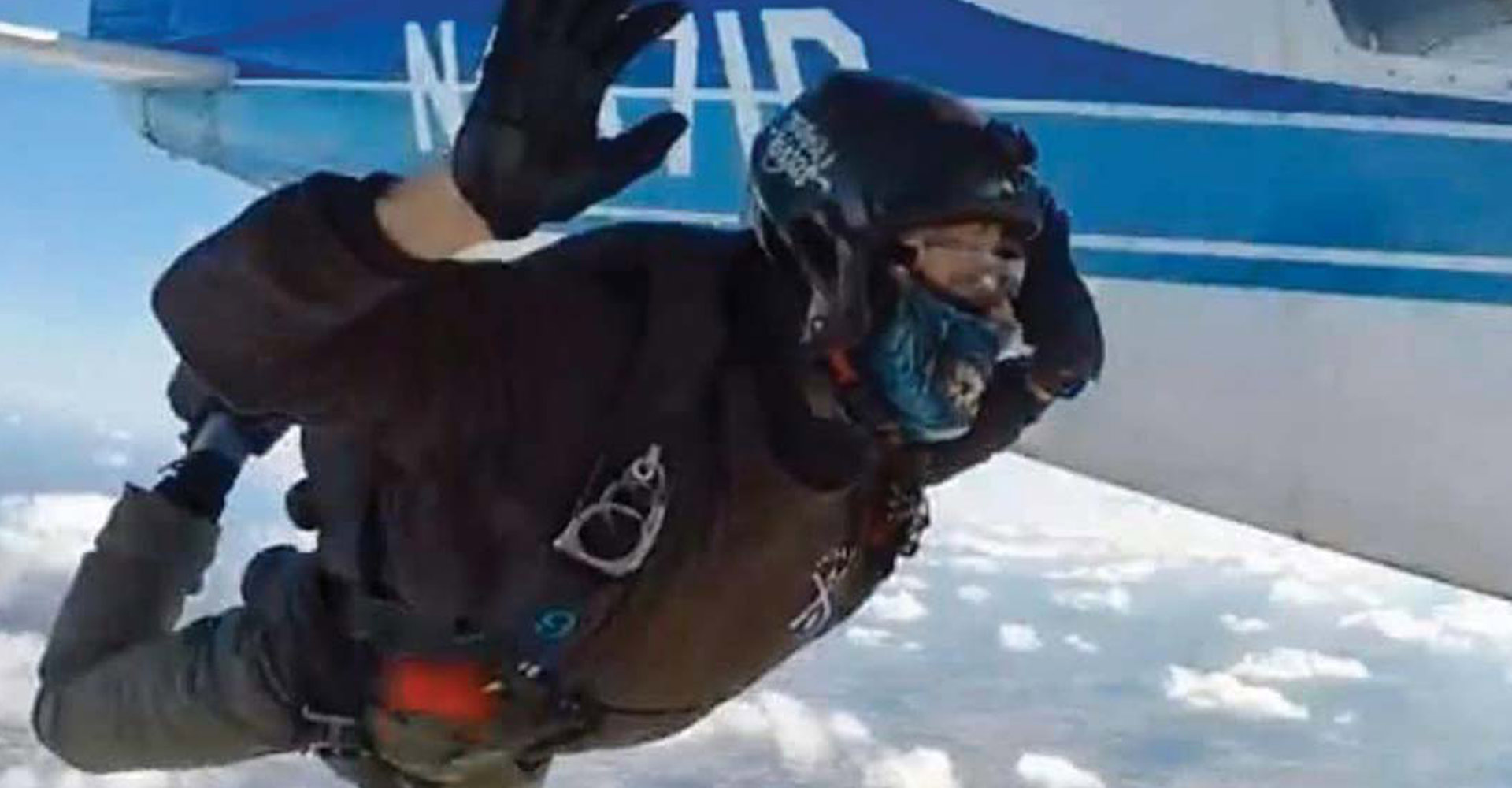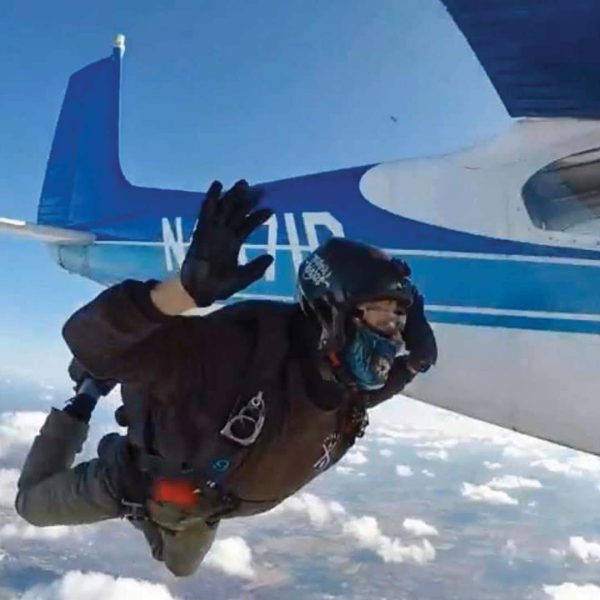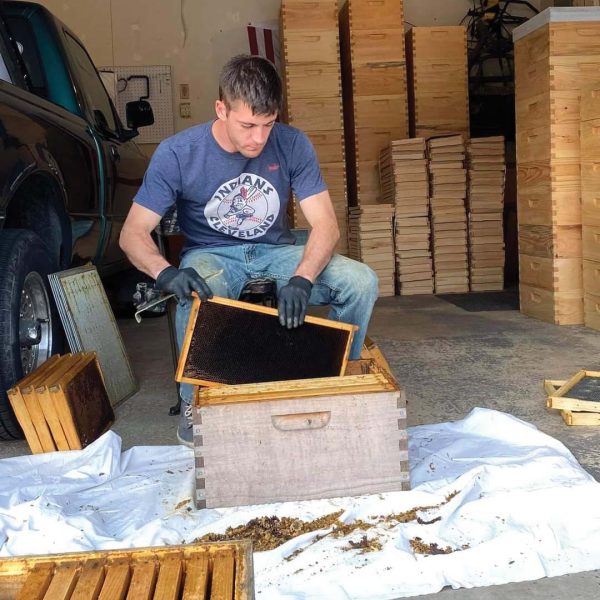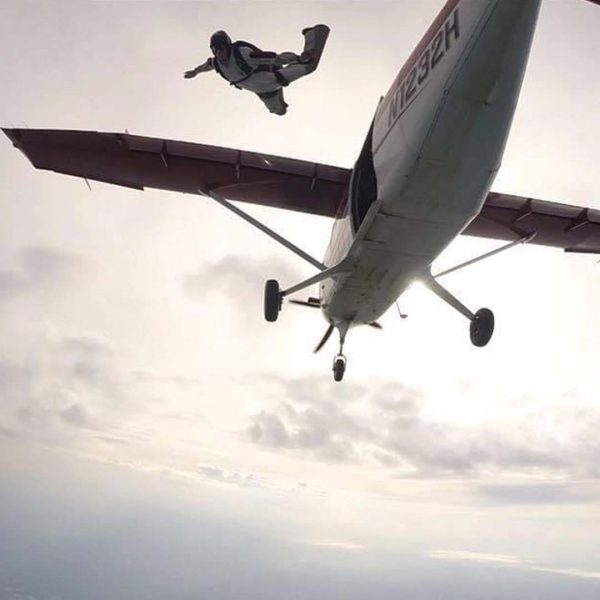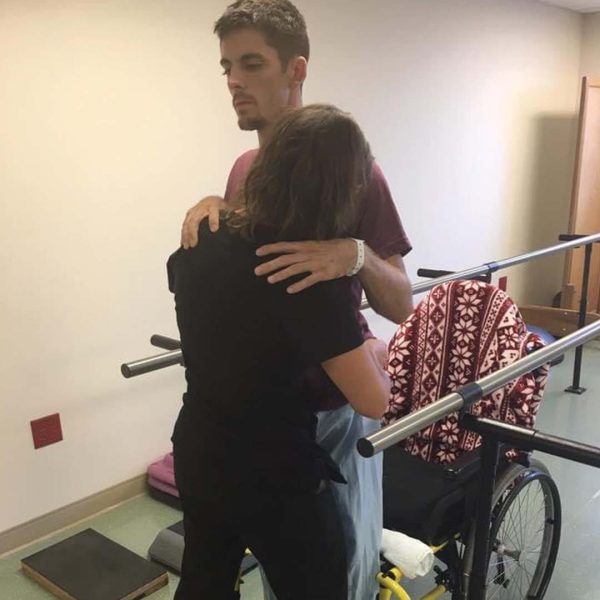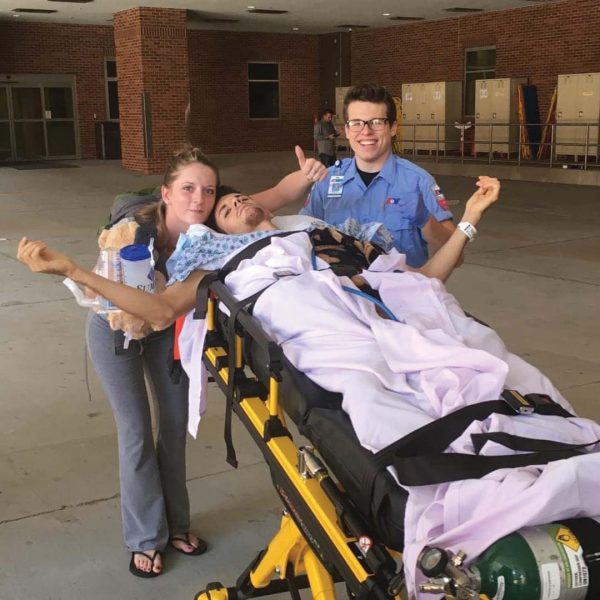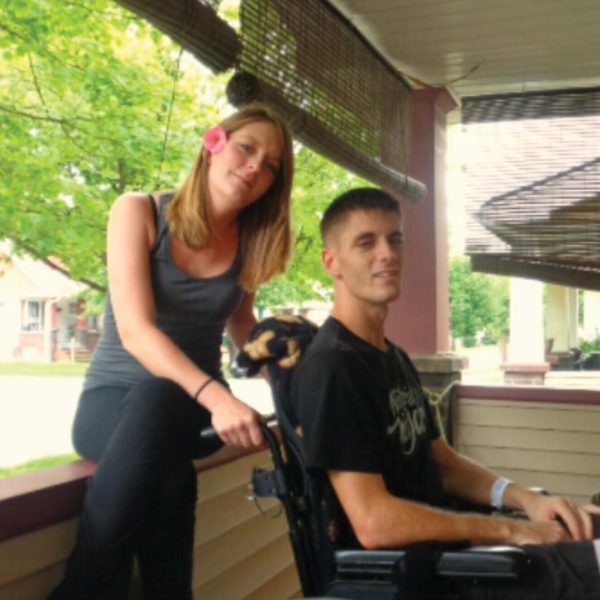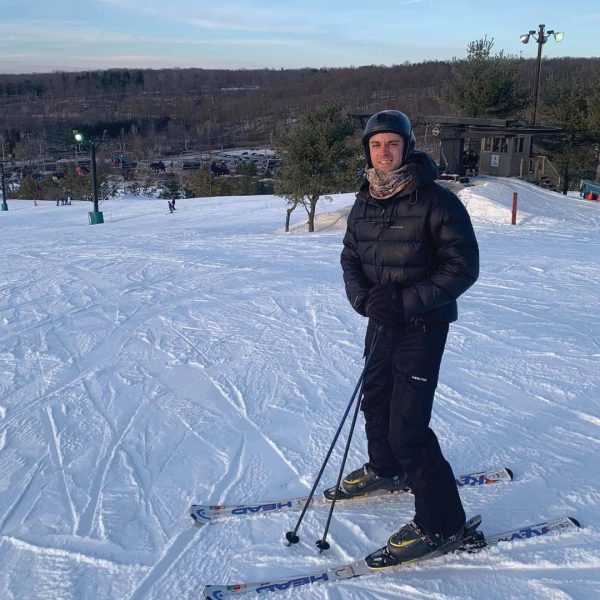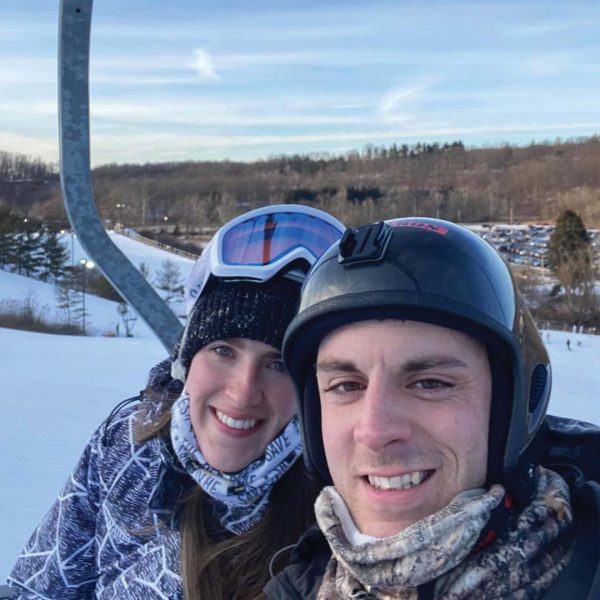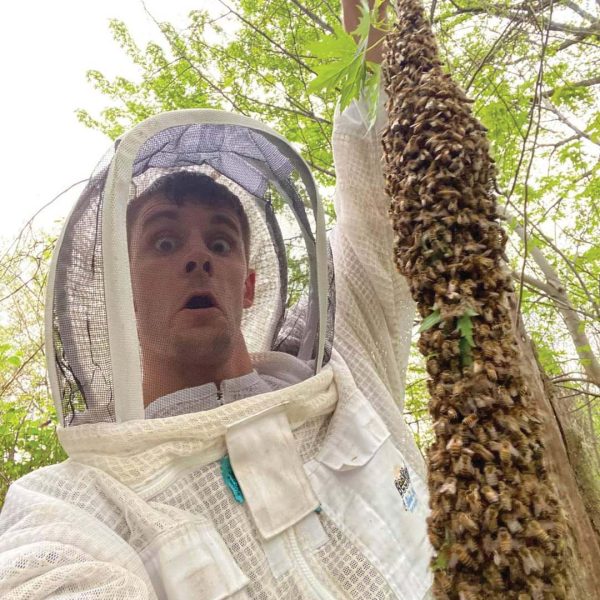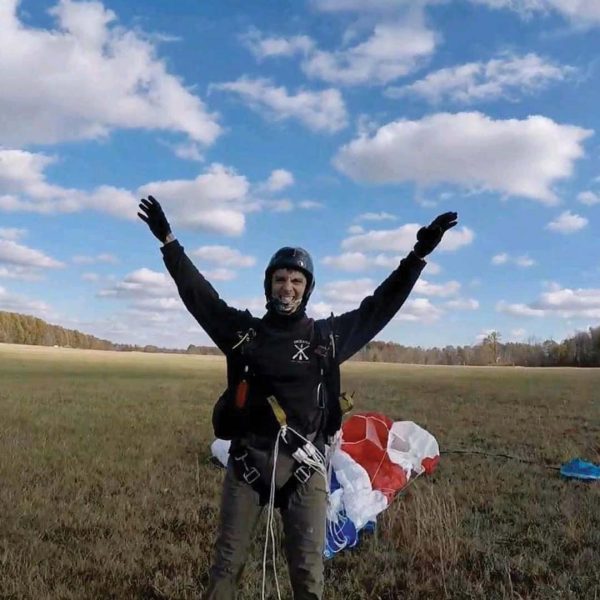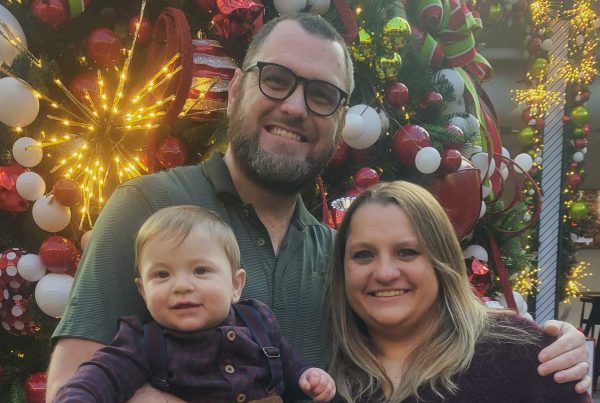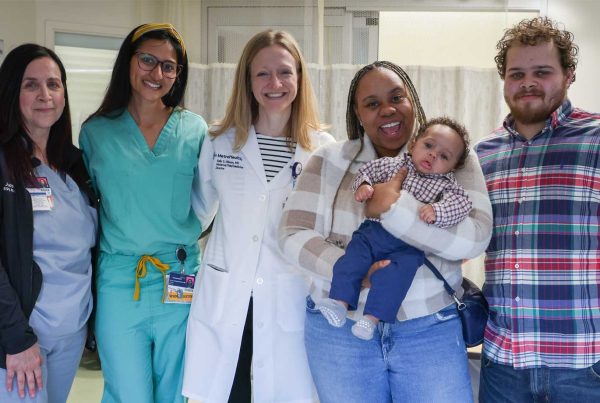Tim Angelone was always on the go. When the Cleveland police officer wasn’t on call, he could be found kayaking, hiking, paddle boarding, running, skydiving—you name it. And in between, he bred his own bees, selling the honey through his Cleveland Honey Bee Company.
On August 20, 2016, his life took a drastic turn.
Tim was getting ready to skydive with his buddies. It would be jump #224 for Tim. As the single-engine plane reached 13,000 feet, Tim jumped out of a plane, falling 150 miles an hour. He soon realized he was headed for a creek. To avoid that, Tim quickly pulled his left hand down to brake that side of the canopy, to do an about face, and turn away from the water. But as soon as he turned, he knew he’d made a mistake. Instead of heading for the ground feet first, his belly was leading.
As the ground hurtled toward him, Tim knew there was only one thing that might save him. With all the strength and speed he had, he yanked the parachute brake in each hand. I’m going to hit the ground so hard, he thought as he sped toward a freshly planted soybean field.
Then worse: I’m not going to survive this.
After he landed, Metro Life Flight flew Tim to the nearest hospital, Summa Akron City Hospital, for emergency surgery on his spine. As he drifted in and out of consciousness, he could see he was hooked to a machine in a hospital room—he had a brace around his neck and couldn’t feel his legs.
His pelvis had broken away from his spine. His sacrum was cracked in half. And he’d herniated discs in his lower back. Tim thought he’d spend the rest of his life in a wheelchair, never to walk again.
That first week, his care team recommended the MetroHealth Rehabilitation Institute at Old Brooklyn Medical Center, telling Tim it was his best chance at recovering. It wouldn’t be easy, they warned. He would have to work—hard—and move. There was no lying in bed, hoping for recovery.
“I want to heal,” Tim blurted.
“Moving is healing,” they responded.
On day seven of being in the hospital, two physical therapists showed up in Tim’s room, positioned a walker next to his bed, wrapped a transfer belt around his waist and, one PT under each arm, slowly raised him to his feet. He stood for maybe five seconds. But he’d done it. And he’d proved he was ready for intensive rehab.
The next day, he was transported to MetroHealth Rehabilitation Institute. His team pulled together a plan that had him going home in just four weeks. Impossible, Tim thought. That first day of therapy consisted of Tim sitting in his wheelchair, tears streaming down his face, crying out in pain, while a physical therapist flexed his right foot, the better of the two. It was all he could do. But it was progress.
Within days, he was getting out of bed without the crane-like lift that hoisted him up in its giant sling. With the help of two or three nurses, he could sit up. But the pain of all that brought on panic attacks. So once he was up, he sat in a chair all day long until it was time to go to bed. You’re going to make a full recovery—this was his mom’s mantra whenever he’d start to panic or cry. All Tim could do was swear.
Every day for three or four hours, Tim soldiered through physical therapy, occupational therapy and pain. Therapists worked with him for hours until he was moving his feet on his own, then his ankles and his knees.
That was Week 1. Maybe I can do this, Tim thought.
Week 2: He was standing—for five seconds, then 10, with therapists supporting him. By week’s end, he was taking his first steps, holding tight to the parallel bars.
Week 3: He was walking the entire length of the parallel bars, with a therapist and a wheelchair behind him, just in case. He was climbing stairs, too, getting in and out of the car and shower, and putting on his socks by himself. By the end of the week, he had graduated from wheelchair to walker to cane to crutches.
Then came Week 4. Suddenly, during physical therapy, what felt like lightning bolts shot through Tim’s left foot and leg. He couldn’t walk.
Tim yelled. And swore. And cried. It felt like everything he had worked so hard for was gone. But at the end of that week, he did go home.
“I didn’t want to leave the place, because they had taken such good care of me.” Tim’s brother and a friend moved into his apartment to help, but they both had jobs. He tossed his pain medication, too. Working as a cop, he’d seen plenty of drug addicts.
Some days, he’d cry until he couldn’t cry anymore. He didn’t want to see or talk to anyone. What he wanted to do was die. When he started planning how, he knew he was in trouble and sat down with one of his MetroHealth doctors. “He listened—genuinely listened—to me that day, then he went into the hallway and found a group of people to help. They came up with a plan to give me my life back.”
Back on the right medication and in regular sessions with a rehab psychologist, Dr. Kip Smith, Tim’s depression began to lift. Seven months after his surgery, he was back at work on light duty. Three months later, he thought maybe he could backpack again. So, in August 2017, Tim flew to Europe and walked the northern route of the Camino de Santiago with a friend. After 40 days of hiking, Tim’s nerve pain began to lift. His head was healing, too.
Fifty-three days after he took the first step, with 650 miles behind him, Tim returned to desk work at the Cleveland Police Department. He got back to paddle boarding, camping and beekeeping, too.
On Nov. 4, 2019, buoyed by his closest skydiving friends, Tim made his first solo jump since the day he nearly died. “It was the last thing that I felt like I wanted—and needed—to do,” he says. “When I jumped from that airplane on my own,” he says, “I felt complete.”
Tim has fought his way back, every step of the way. Today’s life looks different than he had imagined at one point, but it’s good. He’s happy. Today, he lives in Middleburg Heights. He and his girlfriend Brittany recently celebrated their one-year anniversary.
Still working at the Cleveland Police Department, Tim is part of a Countywide Peer Support Program that helps any first responder in Cuyahoga’s more than 50 communities overcome the death of a co-worker or family member, a divorce—any kind of physical, emotional or mental trauma.
“This is what gives me joy: talking to people who are going through the worst periods of their lives,” Tim says, “trying to provide a bit of hope when they might be lacking hope. Like I was.”

